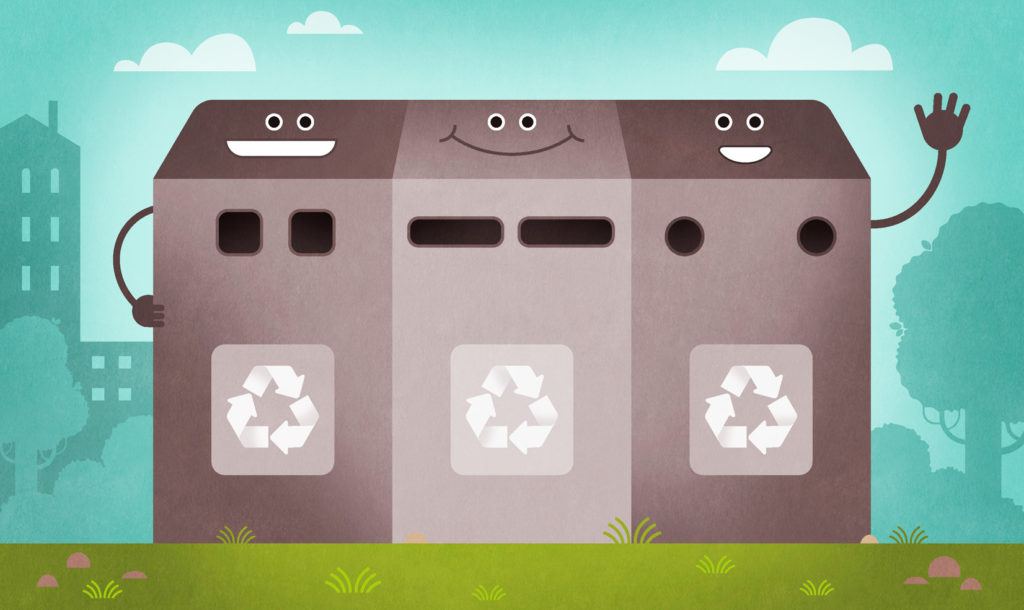The new Waste Act increases the fees paid by packaging producers

The new Waste Act is being prepared, and it will enter into force in summer 2020. The law reform aims to significantly increase the volume of recycled waste.
“This will inevitably also increase the fees related to producer responsibility for packaging,” says Juha-Heikki Tanskanen, CEO of Finnish Packaging Recycling RINKI Ltd.
The recycling targets for packaging have been achieved so far, but still a lot less than 30% of plastic packaging is recycled. The recycling rate for plastic packaging must be 50% by 2025.
Higher fees
Increasing the volumes of recycled materials requires the introduction of several measures, and more plastic packaging waste must be collected from residential properties.
In terms of producer responsibility, this will mean significantly higher fees payable by packaging producers because, in a sparsely populated country like Finland, logistics operations are costly.
“If every property must have a collection container for each type of waste, it is expensive and generates a lot of transport emissions. Packaging producers want to find the most efficient ways to achieve the recycling targets for packaging waste. If the recycling rate must exceed the recycling targets set for the producers, it should be the responsibility of municipalities and waste producers, not packaging producers, to arrange this,” says Tanskanen.
Improving the circular economy
The reform of waste legislation is based on a number of EU directives aimed at improving the circular economy. According to the directives, 55% of municipal waste must be recycled in 2025, and by 2035 the recycling rate must be 65%. At the moment, 41% of municipal waste is recycled.
According to the directives, 55% of municipal waste must be recycled in 2025, and by 2035 the recycling rate must be 65%.
The recycling rate target for packaging waste is 65% for 2025 and 70% for 2030. There are different targets for different materials.
“The most difficult targets for Finland to achieve will be those concerning municipal waste and plastic and wooden packaging waste,” says Senior Environmental Adviser Riitta Levinen from the Ministry of the Environment.
“It is clear that we need to significantly increase the property-specific collection of biowaste and packaging waste in order to achieve the recycling targets. I think that the legislation will have to impose very specific obligations in order to increase property-specific collection, whilst taking into account that municipalities and packaging producers should be able to deviate from them if regional characteristics so require,” says Levinen.
By how much will the fees increase?
Packaging producers pay Rinki and producer organisations around EUR 20 million every year for the statutory collection and recycling of packaging waste on their behalf.
According to Tanskanen, the new waste legislation will at least double the fees. There are concerns, however, that the annual payments will rise up to EUR 100 million.
New waste legislation will at least double the fees.
“The most important factor affecting the fees is how much of the responsibility for collecting packaging materials from households is transferred to the producers. We hope that the packaging producers will be able to choose the most efficient means of collecting the packaging waste,” says Tanskanen.
A working group set up by the Ministry of the Environment is working on a report that the ministry will use as the basis for the legislative proposal for parliament next autumn.
Can the targets be achieved?
“As the target recycling rate increases, the calculation rule for recycled waste also changes. This means that the recycling targets will be more difficult to achieve,” says Tanskanen.
At the moment, for example, if 100 kg of plastic packaging is processed and delivered to a treatment plant, the entire volume is considered to have been recycled even if some of the packaging is too dirty to be recycled.
In the future, non-recyclable packaging, so-called sorting rejects, will be deducted from the total volume of recycled waste.
“When the recycling target for plastic reaches 50%, it actually means that 60% of plastic must be collected in order to achieve the target,” says Tanskanen.
Finland – and the companies that bear producer responsibility – will have to report the packaging materials that they use in much more detail. This will mean more work for these companies.
“For multilayer packaging, such as juice cartons, companies are currently only obliged to report the total weight. In the future, each layer will have to be reported separately: cardboard, plastic and aluminium,” Tanskanen explains.
Recycling, reusing or something else? Here’s a brief summary of the terms used when discussing the subject.
Recycling – using waste materials to make new products.
Recycled material – waste material that can be used to make a new product.
Reuse – reusing a product for its original use.
Waste to energy – using waste to generate energy.
Eco-friendliness – activities that damage or change the environment as little as possible.
Producer responsibility for packaging – companies that package their products or import packaged products into the Finnish market have a statutory obligation to ensure that discarded packaging is collected and recycled. Producer responsibility applies to companies that have a turnover of at least one million euros.
Circular economy – an economic model in which, instead of ownership, consumption is based on the use of services: sharing, renting and recycling. Society holds on to value that is bound to materials for as long as possible. In the circular economy, economic growth is not dependent on the consumption of natural resources.